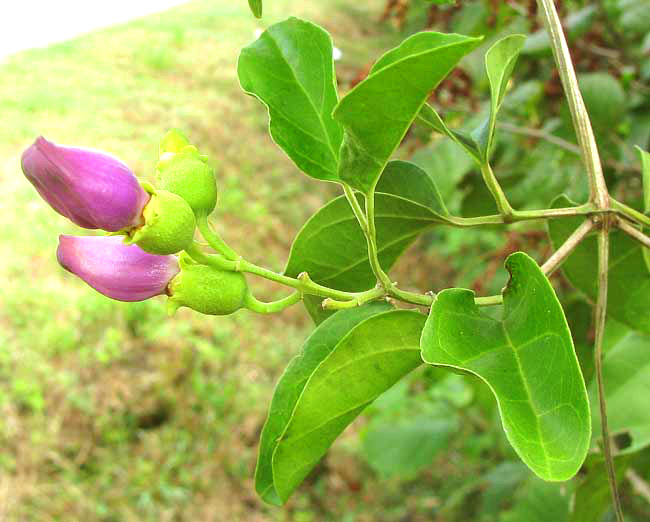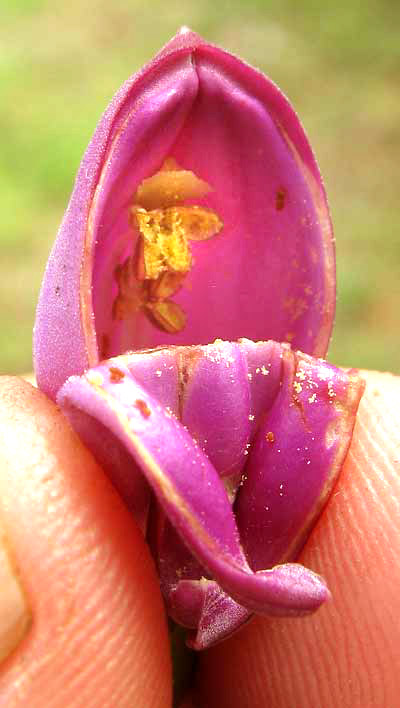Excerpts from Jim Conrad's
Naturalist Newsletter

from the September 26, 2010 Newsletter issued from Hacienda Chichen Resort beside Chichén Itzá Ruins, central Yucatán, MÉXICO; limestone bedrock, elevation ~39m (~128ft), ~N20.676°, ~W88.569°
"DUCK BILL"
At the forest's edge just a few feet from the Maranta there grew a woody vine, or liana, with compound leaves and fairly large, purplish flowers, which I almost ignored. That's because at first glance the liana was so like Cydista potosina, which also is abundantly flowering right now. Two Newsletters ago we saw a plant taking over nectar- and pollen-providing services from its close relative the earlier-blossoming Cydista potosina. The two Cydista species are much used in this area by basket weaving Maya. You can review what one of them looks like at www.backyardnature.net/yucatan/cydista2.htm.
Something about this roadside vine looked a little different, so I took a closer look. That's it at the top of this page..
Maybe you remember that stems of the two Cydistas were square in cross section. This vine's stems were hexagonal. Also, the Cydistas' blossoms opened widely at their mouths, but all flowers on this vine seemed to have the margins of their upper and lower lips fused together! Finally, this roadside liana's urn- shaped, green calyxes were unlike any I'd ever seen, looking like a calyx inside a calyx. In the picture you can barely see the two rims of the top flower's double calyx.
This new woody liana looks and behaves so like the two more common Cydista species that you wonder if some kind of co-evolution is going on here. It turns out that our closed-mouth species is a member of the Bignonia Family, the Bignoniaceae, same as the Cydistas, but it's a different genus. It's AMPHILOPHIUM PANICULATUM, which the locals call "Pico de Pato," which means "Duck Bill," because of the closed corollas' shape.
The margin of a corollas' top lobe bears a low, narrow rim which snugly fits inside the lower lobe's upturned sides. You can see a corolla's two lips forced apart, showing pollen-producing anthers flush with the top lobe's ceiling, and pollen on the bottom lobe's floor, below:

How do these flowers get pollinated? Every blossom I could find was sealed. All would snap open with a little pressure, so maybe the flowers are adapted to keep out all pollinators except those who know how to pry the lobes apart. Several of the flowers I examined had been robbed -- holes had been cut through their corolla tubes so that the robbers could enter the corolla and take what they wanted without doing their pollinating job.
The sealed-flowers strategy seems to work for Amphilophium paniculatum, however, for my Maya friends tell me that the species is fairly common, plus the species enjoys a large area of distribution, being fround from Mexico through Central America and northern South America to Argentina.